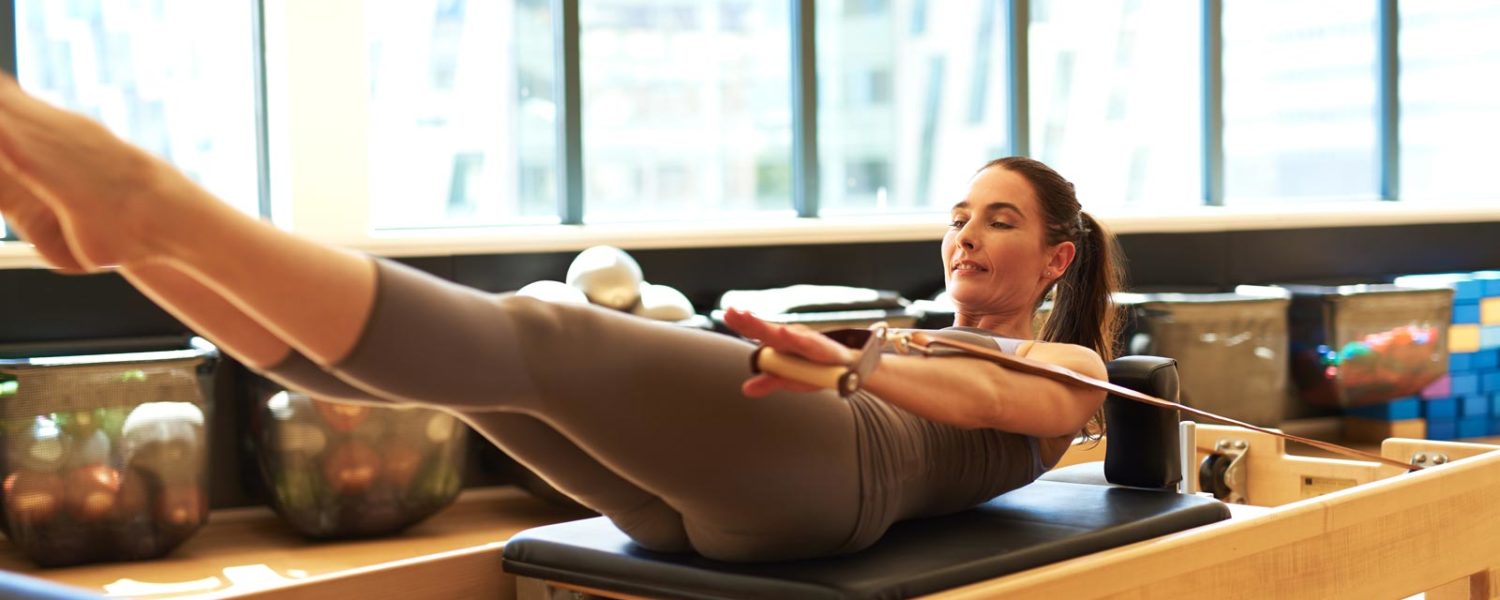Pilates: More Than “Mat”s the Eye
“Pilates? Sure I’ve done Pilates! There’s a class at my gym I’ve been to a few times.” – said no True Pilates practitioner, ever.
When Joseph Pilates designed his core-strengthening, flexibility-enhancing system of exercise, he created two equal parts to one cohesive whole: reformer work and mat work. If your experience of Pilates thus far has been limited to the latter—or, worse yet, only through group classes at a big box gym—then you have been denying yourself tons of benefits that the Pilates system of exercise can offer you.
Why the reformer works
The fitness guidelines for adults from the Center for Disease Control and Prevention recommend 150 minutes (2 hours 30 minutes) of moderate aerobic activity exercise and two or more days of muscle-strengthening activities weekly. In addition, stretching exercises are recommended in order to maintain flexibility. If this amount of exercise sounds overwhelming to you, reformer workouts could be your answer.
The reformer is a spring-based piece of equipment. The resistance provided by the springs offers weight-bearing (read: muscle-strengthening) exercise that increases lean body mass and increases not just your muscle strength, but your bone strength, too, helping to prevent serious diseases like osteoporosis.
A workout on the reformer is a moderate exercise, in the same league as lawn mowing, brisk walking, or recreational badminton. Since each Pilates session is 60 minutes, two Pilates sessions a week practically completes your recommended fitness requirements. Plus, the lengthening and stretching that is a fundamental component of the Pilates system means you get all three recommended fitness aspects—aerobic, strengthening, and stretching—all in one workout!
How it works
Pilates focuses on strengthening the body’s “powerhouse,” which consists of the abdominal muscles, lower back muscles, pelvic floor, and the muscles around the hips and glutes. Pilates improves posture, functional movement, and reduces the risk of injury, all while offering maximum flexibility with peak strength.
Reformer sessions offer customized one-to-one instruction, allowing for tailored instruction to meet your fitness needs and goals. Having the instructor focused entirely on you—and not you and ten other people in the room—also ensures that you’ll assume the proper form, alignment, powerhouse engagement, and that you’re being pushed (safely) to your limits. Private reformer sessions also guarantee exercise without the dread and monotony of the gym; no two sessions will be the same. All of this equals results you can feel and see.
How fast will it work?
Joseph Pilates is famous for saying, “In 10 sessions, you will feel better, 20 sessions you look better, 30 sessions you have a completely new body.” Everyone is different in how fast they will see results, but consistency and frequency are key: two sessions a week is good; three will get you there faster.
And unlike other workouts, you don’t have to worry as much about overdoing it; your dedicated Pilates instructor is keeping a close eye on you and really studying how your body is reacting and performing each move. No matter the particular routine that they’re guiding you through, your 60 minutes is maximized to give you the most efficient and effective workout.
Tips
Now that you’re determined to ditch the “Pilates-inspired” gym class and find a dedicated Pilates studio, make sure you choose one with knowledgeable instructors who have top-notch training.
Remember to ask questions! If something ever doesn’t feel right—you should never feel it in your neck or lower back—speak up right away.
If you have a history of a particular injury, be sure to tell your instructor. When they ask you at the start of the session, “How are you?,” it isn’t a perfunctory gesture of social politeness; it is a genuine inquiry. Whether you slept in a lousy position the previous night or if your chronic hip problem is acting up, how your body is feeling on that particular day can greatly inform the way in which your instructor will tailor your session to meet your exact needs.
This is all the more relevant for pregnant Pilates practitioners, whose bodies change so rapidly that specific updates on “how you’re doing” is a crucial bit of information for your instructor before you begin that day’s session. (And yes, Pilates is not only safe during pregnancy, it is highly recommended.)
So before you draw any conclusions about Pilates through your limited experience in a big box gym setting, do yourself a favor and give it a whirl at a True Pilates studio with certified Pilates reformers. It just may reform your view of exercise… while reforming your body, too.
Pun intended.

